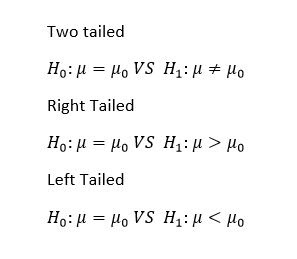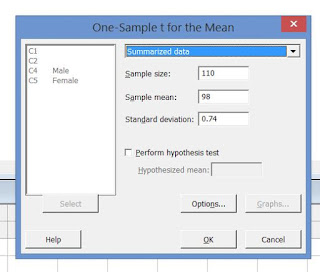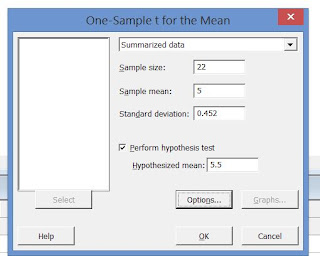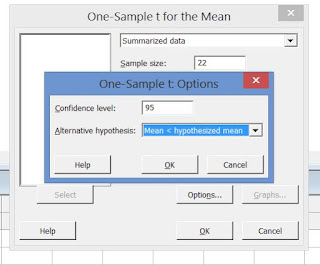Sign Test for Small samples
Why Sign test?
In statistics we usually deals
with parametric tests. To conduct a parametric test, certain assumptions have
to be satisfied. Such as the normality assumption. But sometimes, these
assumptions are violated. In that case we will use the corresponding
non-parametric alternatives.
Actually non parametric tests can
be used every time instead of parametric tests. But due to the popularity of the
parametric tests, we usually use non-parametric tests, when the assumptions of
the parametric tests are violated.
Sign test is the non-parametric alternative
for the one sample T test. In one sample T test, we test for the population
mean. But in sign test, we test for the population median.
When to use the Sign test?
When the sample size is large (greater
than 30), we can use the one sample t test. Because using the central limit
theorem we can say that the distribution of the sample mean is approximately
normally distributed. To use the one
sample T test when the sample size is small, the corresponding population
should be normally distributed. But what if the population that the sample was
taken is not normally distributed?
In this situation, we can use the
sign test as the assumptions of the one sample T test has violated.
Consider the following example.
The monthly income of 6 randomly chosen students are $1200, $750, $1250, $950,
$1050 and $1450 respectively. Is there evidence that the median income of
students is more than $950?
Following steps should follow in
sign test
Step 1 : Identify the null and
alternative hypothesis
Step 2: Calculate the test
statistic.
The test statistic C is the
number of values (+ values) greater than median. To do this, first arrange the
data in either ascending or descending order. So in this example the ascending
order is $750, $950, $1050, $1200, $1250 and $1450.
The values which are greater than
median are + values. And the values which are less than median are – values. The
values that are exactly equal to the median should be ignored. The sample size
n* should be the all values excluding the number of observations
which are equal to the median.
So in this example, n*
= 5 and C = 4
The test statistic C has the
following distribution under the null hypothesis.
C ~ Bin (n*, 0.5)
Step 2: Calculate the P value.
P value = P(C >=4) .
So P value = P(C=4) + P(C=5). To
calculate this you can use binomial table or manually calculate each
probability.
So p value is =0.1875.
So the P value is greater than 0.05. Therefore the null hypothesis is not rejected.
This is how we can conduct sign test manually. In next post we will discuss how to do this using minitab.















